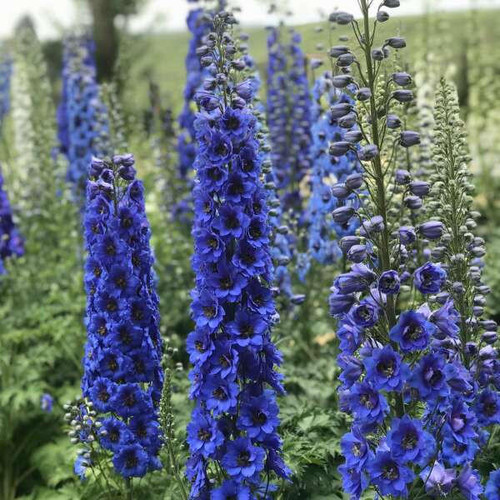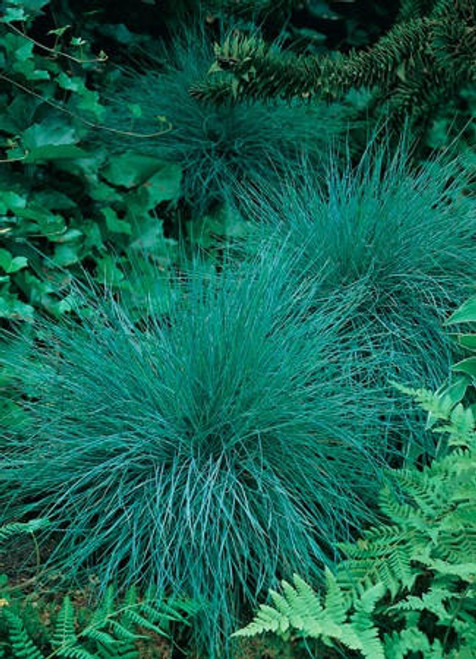Product Description
Centaurea montana 'Blue'Common Name: Perennial Bachelor's Button, Mountain Bluet,
perennial cornflower.
Zones 3 to 8.
Full Sun.
Plants reach 24 inches tall and 24 to 36 inches wide;
Herbaceous perennial.
Growth rate: Medium; erect, stoloniferous, clump-forming self-seeding perennial.
Centaurea's blue, fringed flowers blossom from early to midsummer and usually blooms again in the fall if plants are cut back hard after the first flush. This species is a low, spreading one and it will self-seed prolifically if it is not deadheaded. Looks best when planted en mass where the blue flower display has the most visual impact.
Centaurea thrives in well-drained, limey soils and is easily grown in average, dry to medium soils. Avoid rich, fertile soils and soggy winter conditions. If planted in too much shade Centaurea will become leggy and floppy. Growing it in full sun and cutting it back hard after flowering should eliminate the need to stake it. Native to dry sites, Centaurea montana 'Blue' is somewhat drought tolerant.
Can spread somewhat rapidly by stolons to form colonies in optimum growing conditions, particularly in cool northern climates. Remove spent flower stalks to the ground after bloom. Plants may be divided every 2 to 3 years.
The flowers are old-fashioned favorites in cut flower bouquets. Attributes: border fronts, cut flower, drought tolerant, cottage gardens or naturalized areas. Attract butterflies like magnets in the garden.
Thirty (30) plants per flat (or tray). Approximate Plug Measurements: 3 inches deep x 2 inches wide.
Other Details
The most important part of the plant is its root system. Healthy roots are the foundation of a healthy, vibrant plant. The type of plug container used is based on the specific needs of the plants. Perennials offered as bare root traditionally perform better when planted as bare root.Planted in a specialized mix, potted plants have well established root systems. Top growth stage will vary depending on the current life cycle and time of year when shipped. In Winter and early Spring dormant plants may be shipped. Dormant plants may be planted right away, even before the last frost date.
Most bare root varieties are field grown for at least one season, though Hemerocallis and Hosta are grown for two seasons. The bulk of the soil is removed during the harvesting process and the tops of most varieties are trimmed back to the crown. They are graded, packed in shredded aspen or sphagnum moss and stored in freezers until ready to be shipped.
See our Container Sizes and Bare Root Perennials pages for more information.
Plant information and care is provided in the Overview section, Plant Genus Page and general information is provided in the Planting Care & Guides. Additional questions can be asked on each Plant page.
Plant Spacing: Using the maximum mature spread or width of a plant to guide spacing, ensures space to grow to full size. To fill an area sooner, plant them closer together. Just remember, future thinning or transplanting may be needed.
Water: Keep a close eye on newly planted perennials, especially throughout the first growing year. Most early plant loss is due to too much or too little water!













